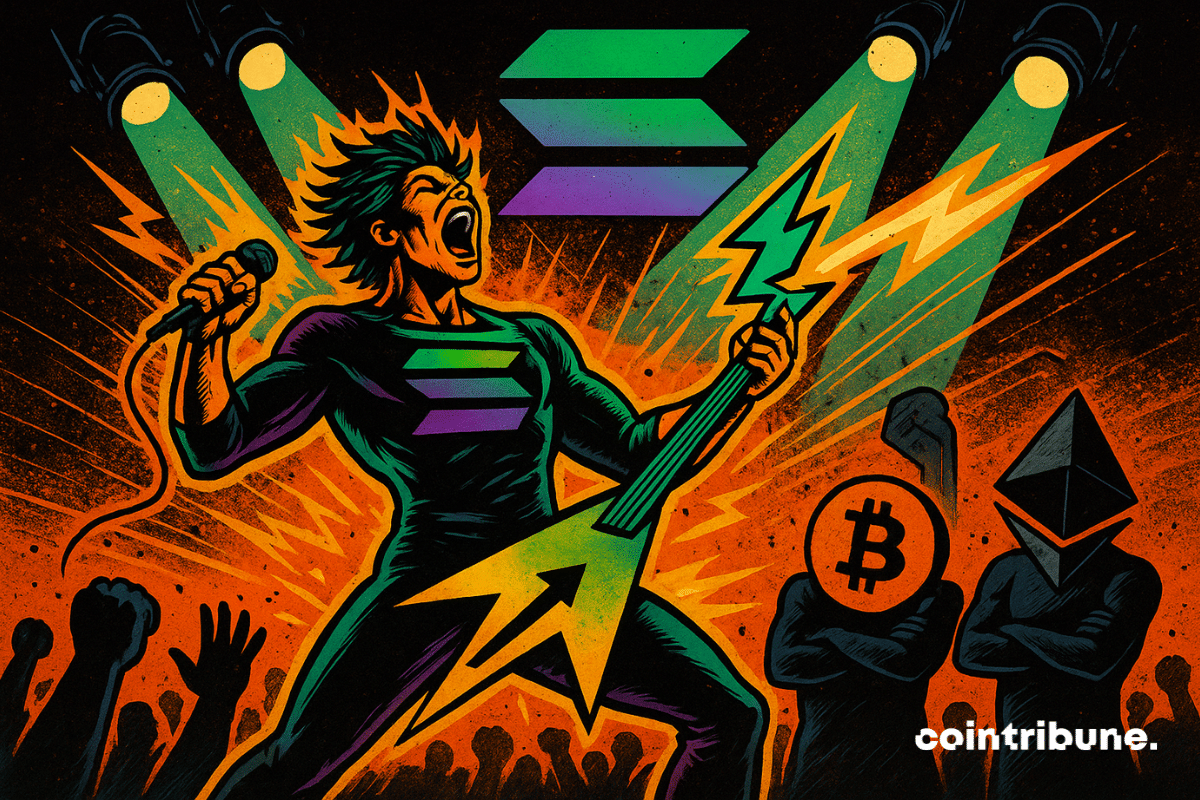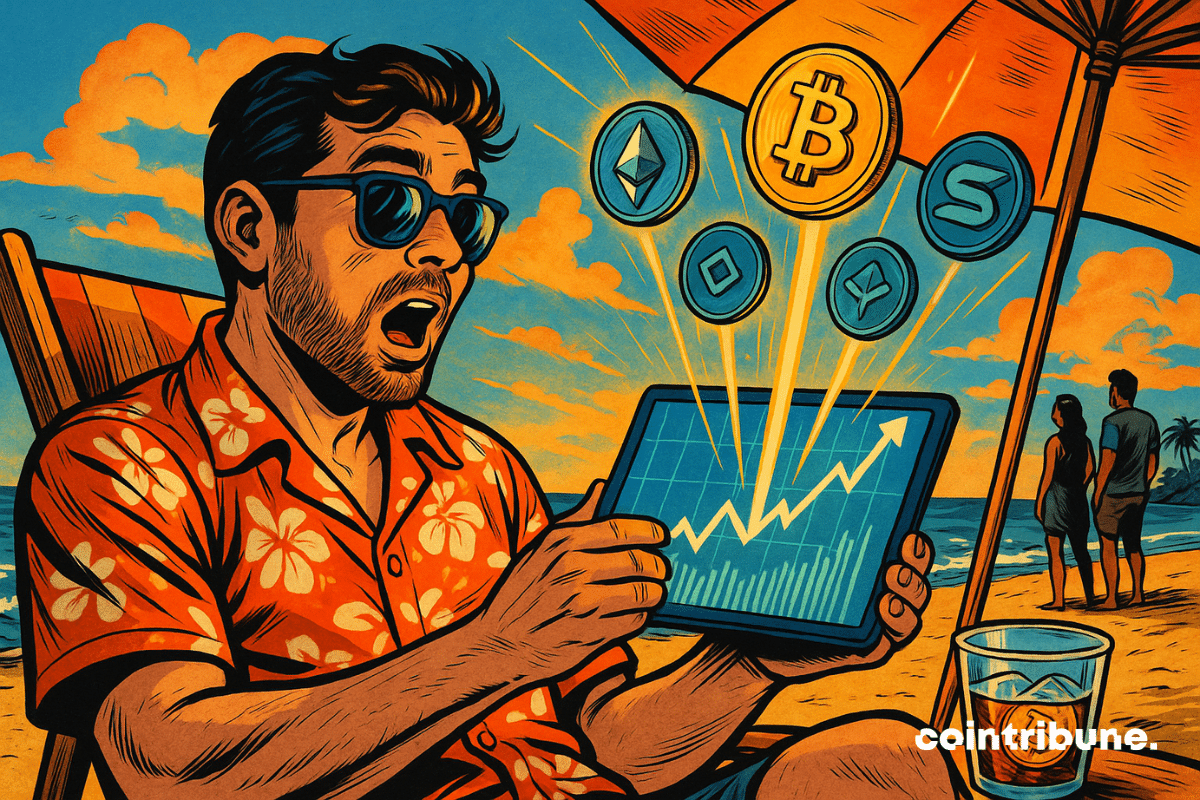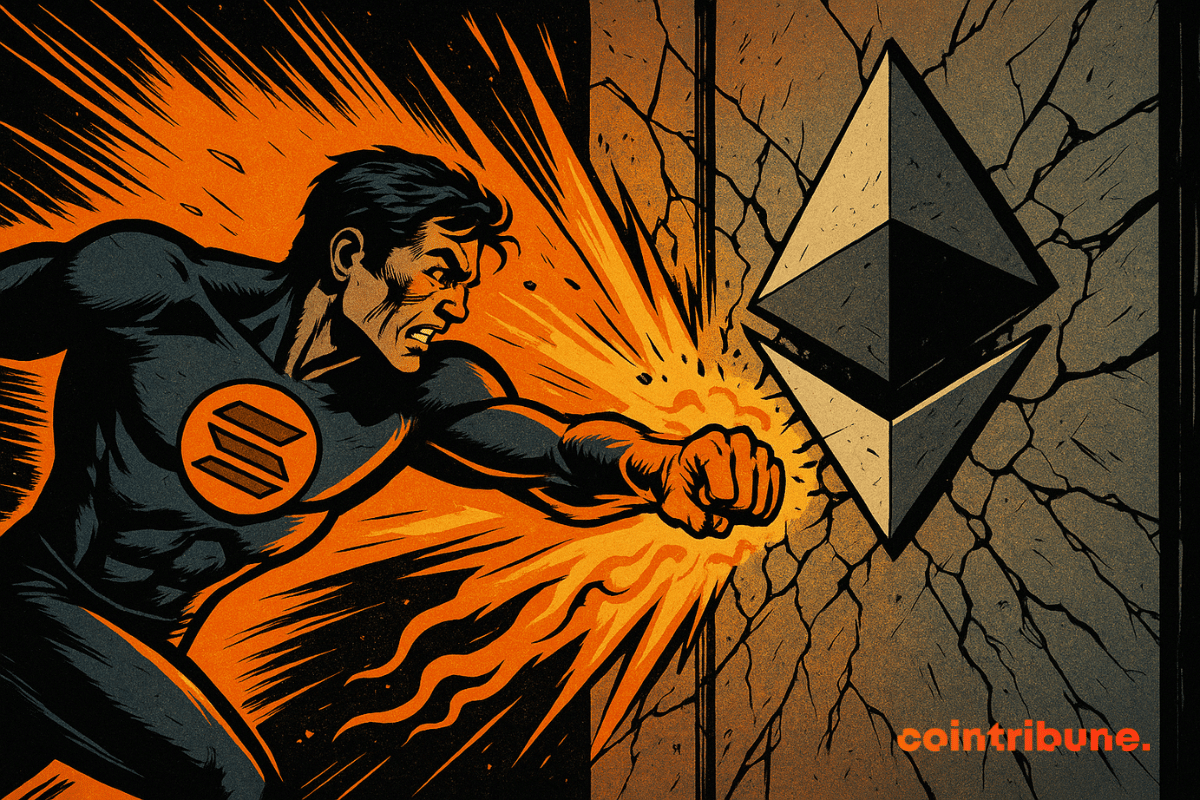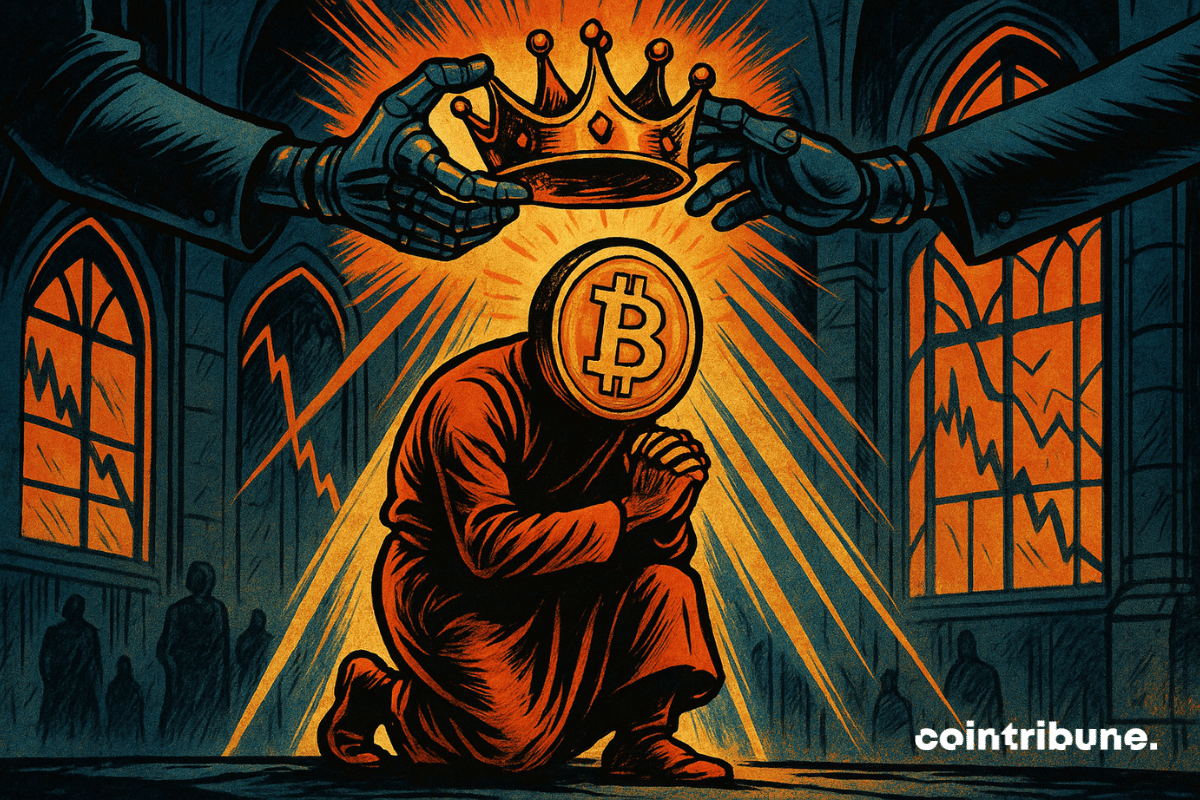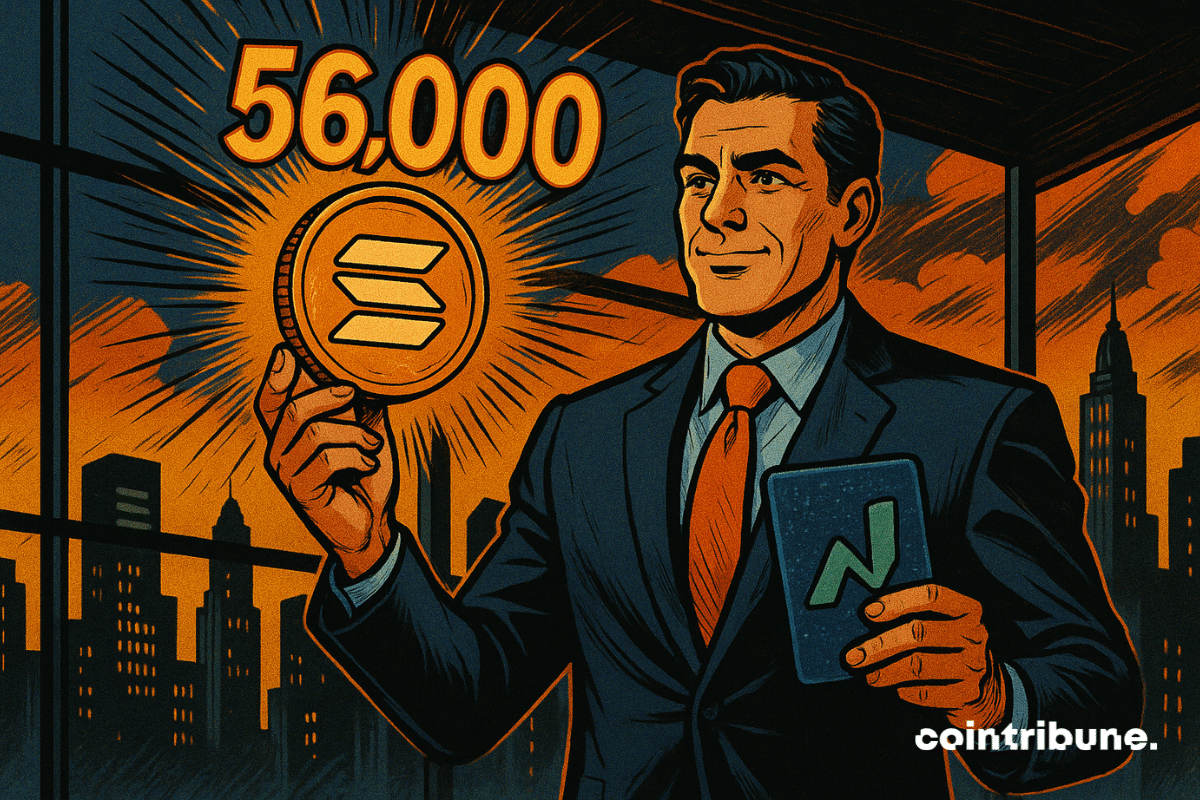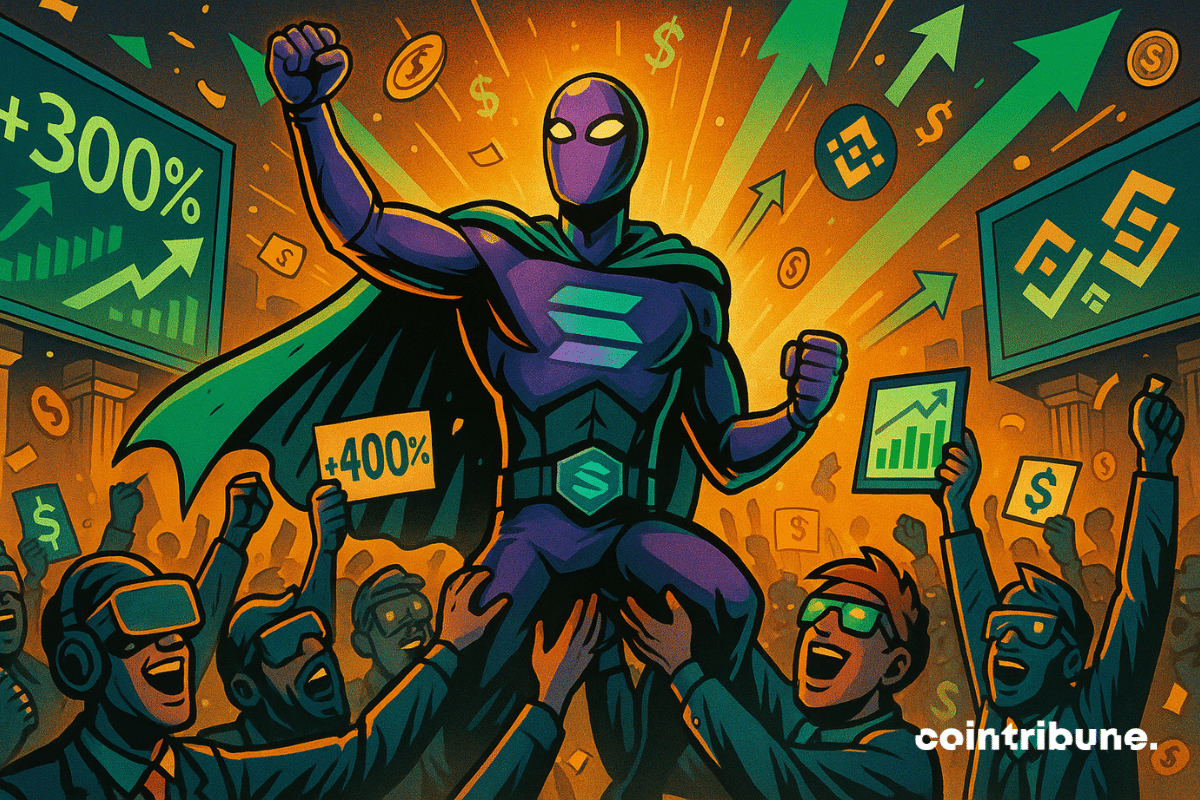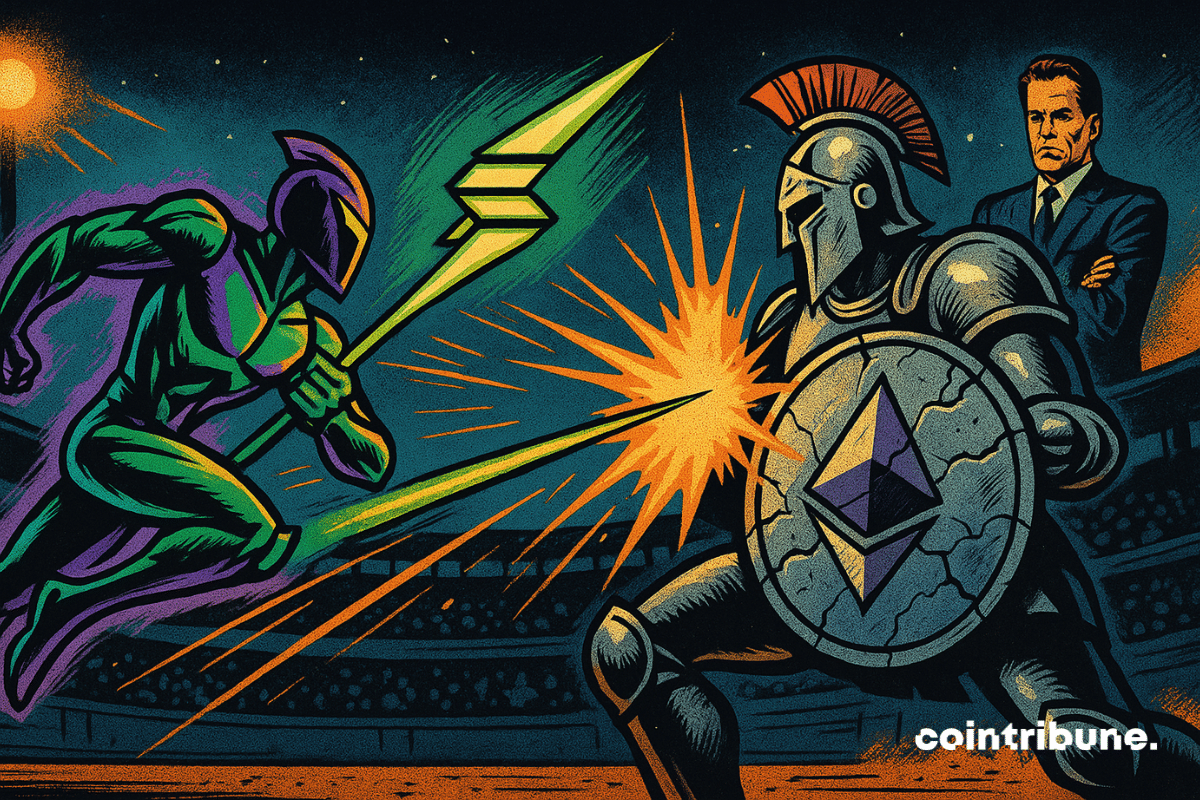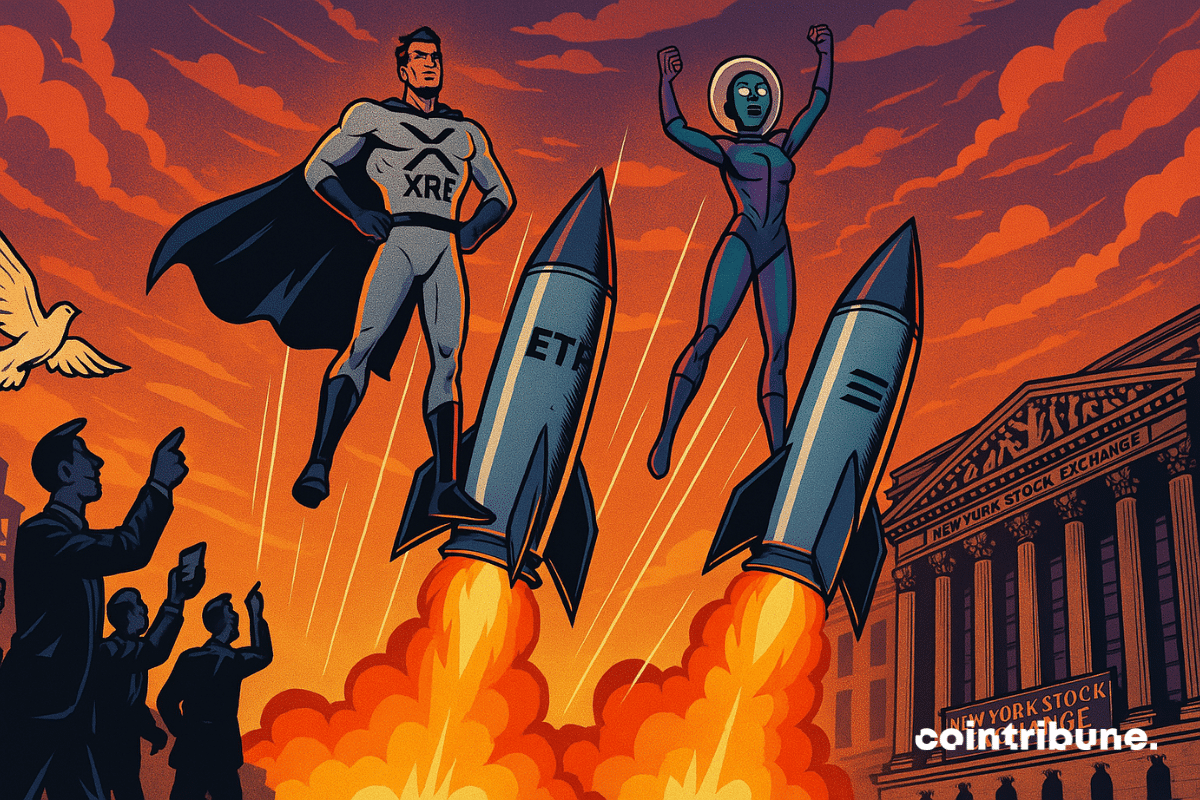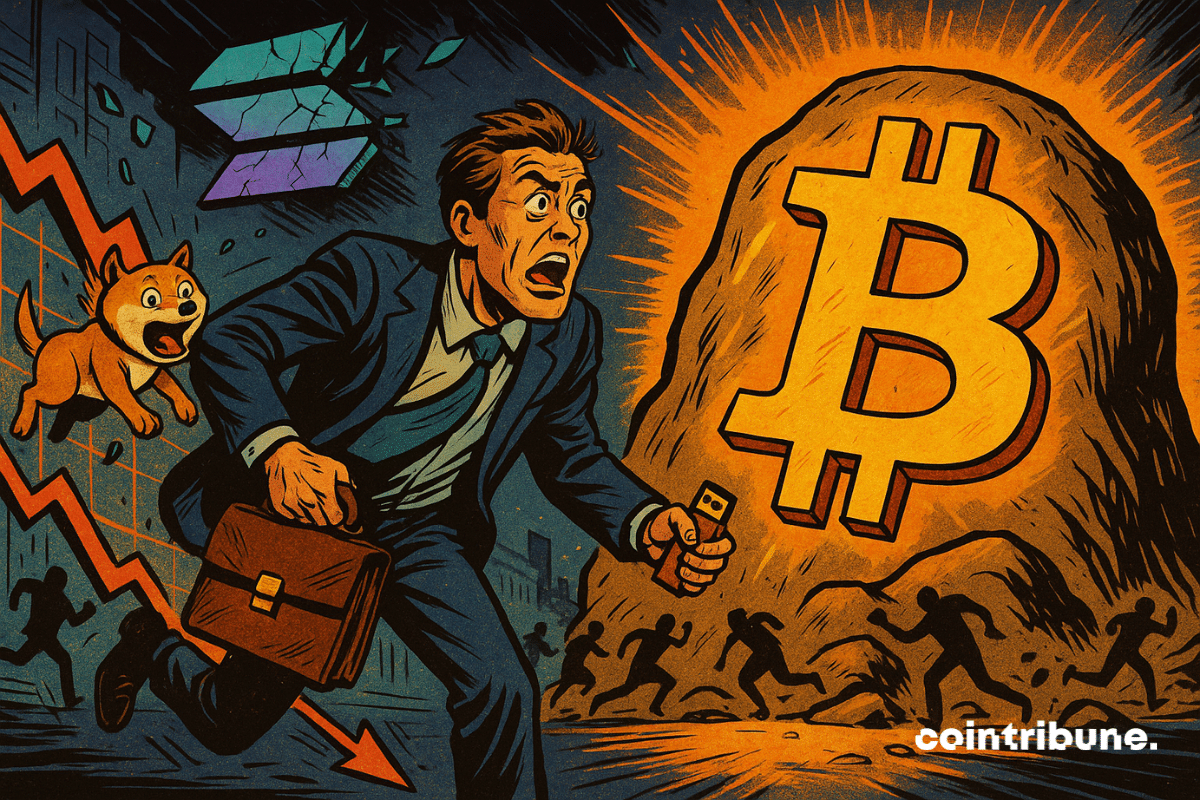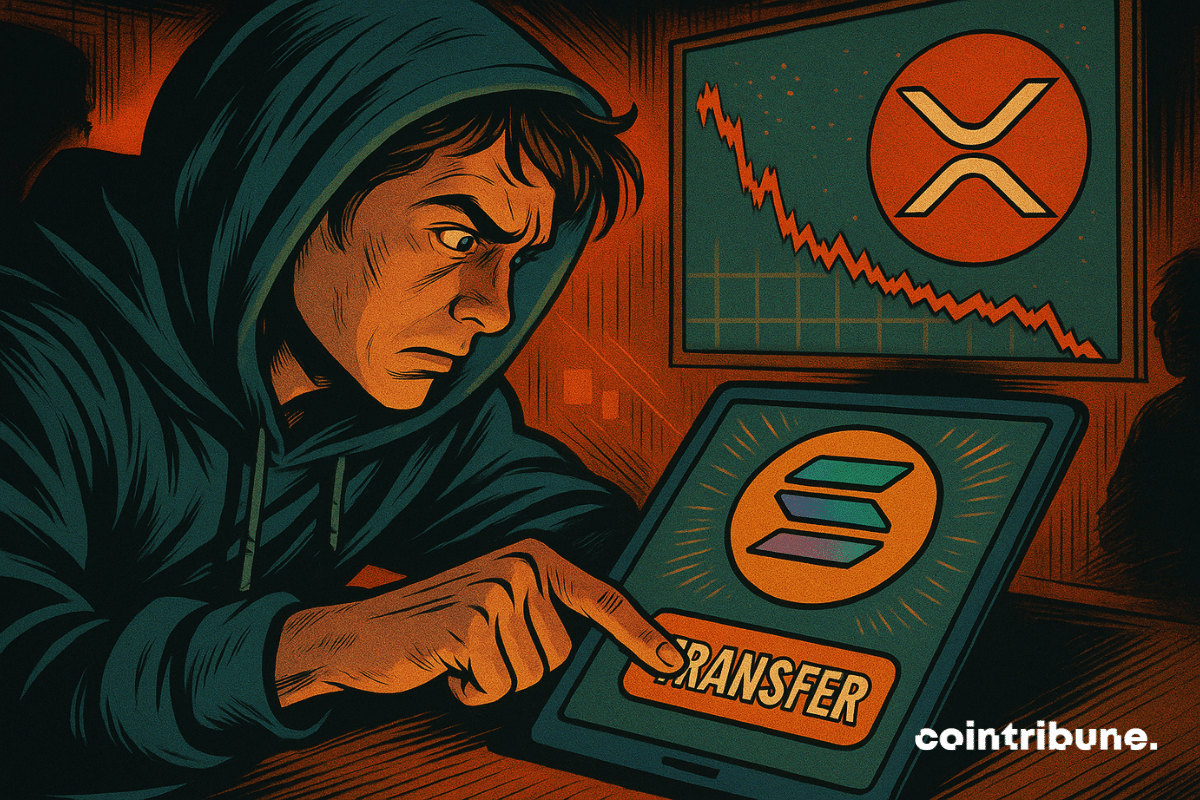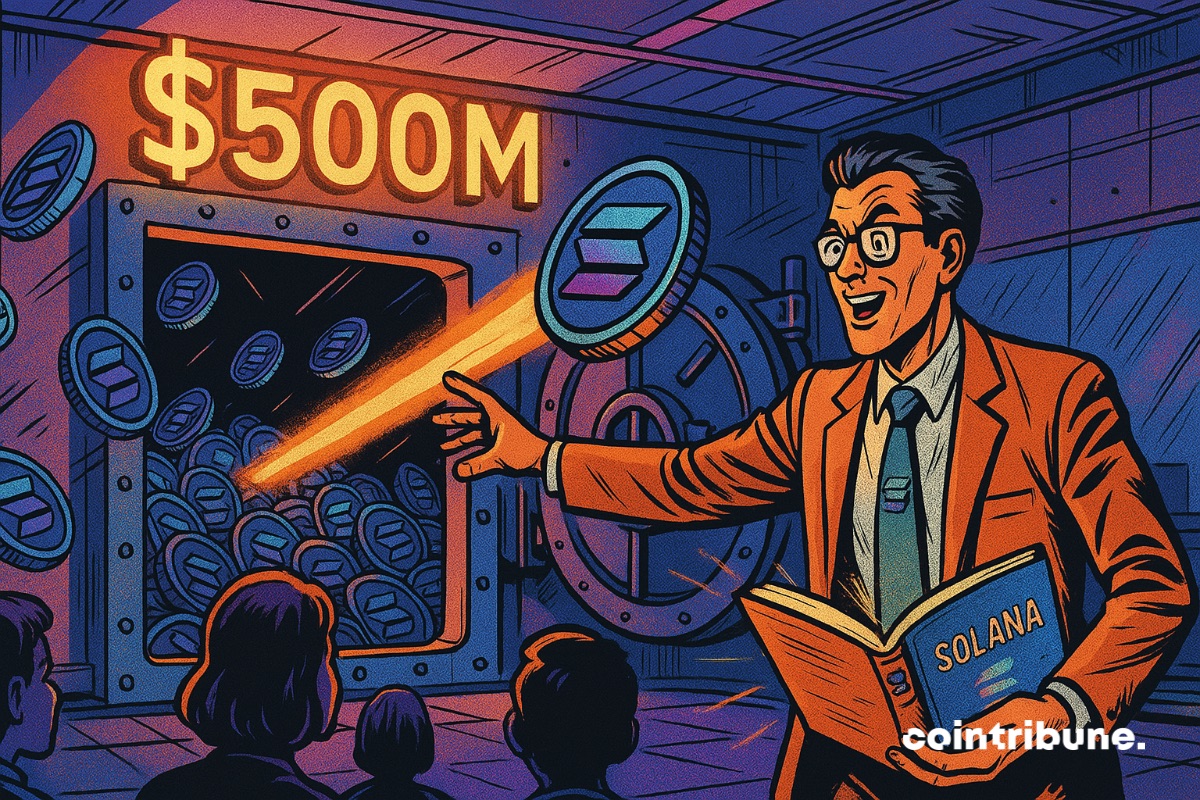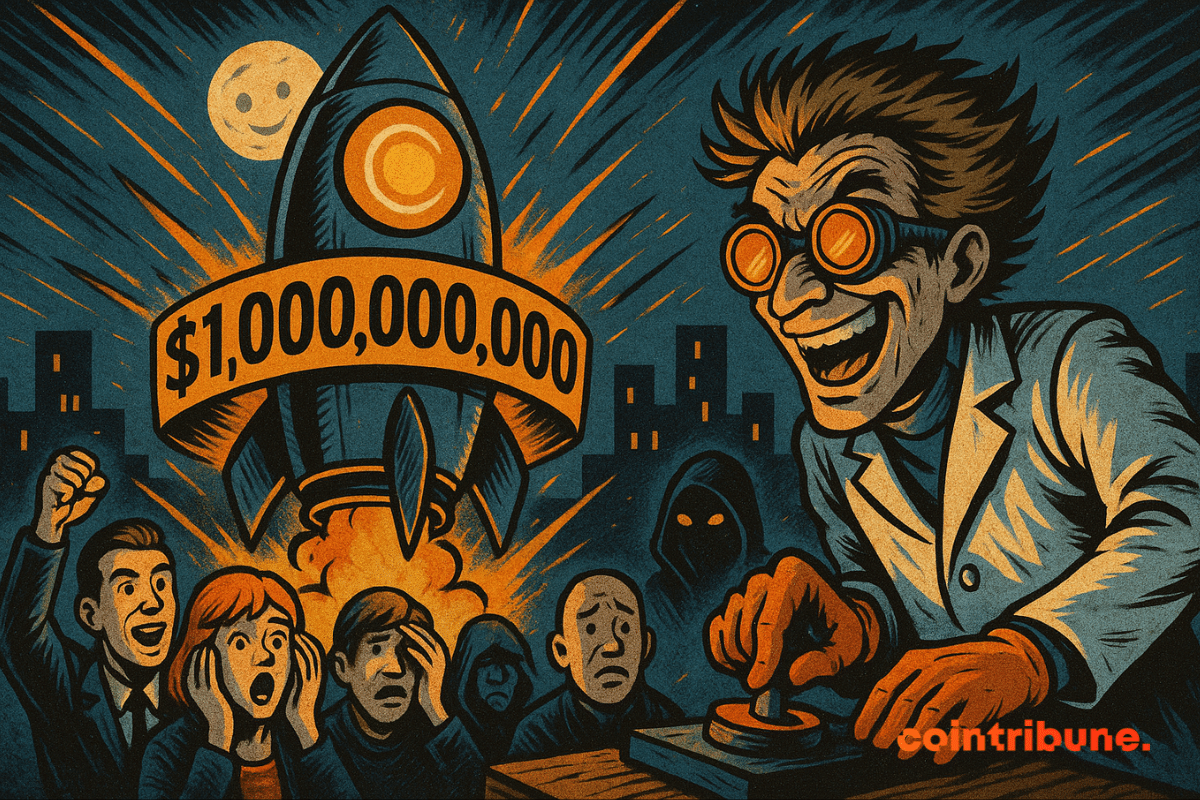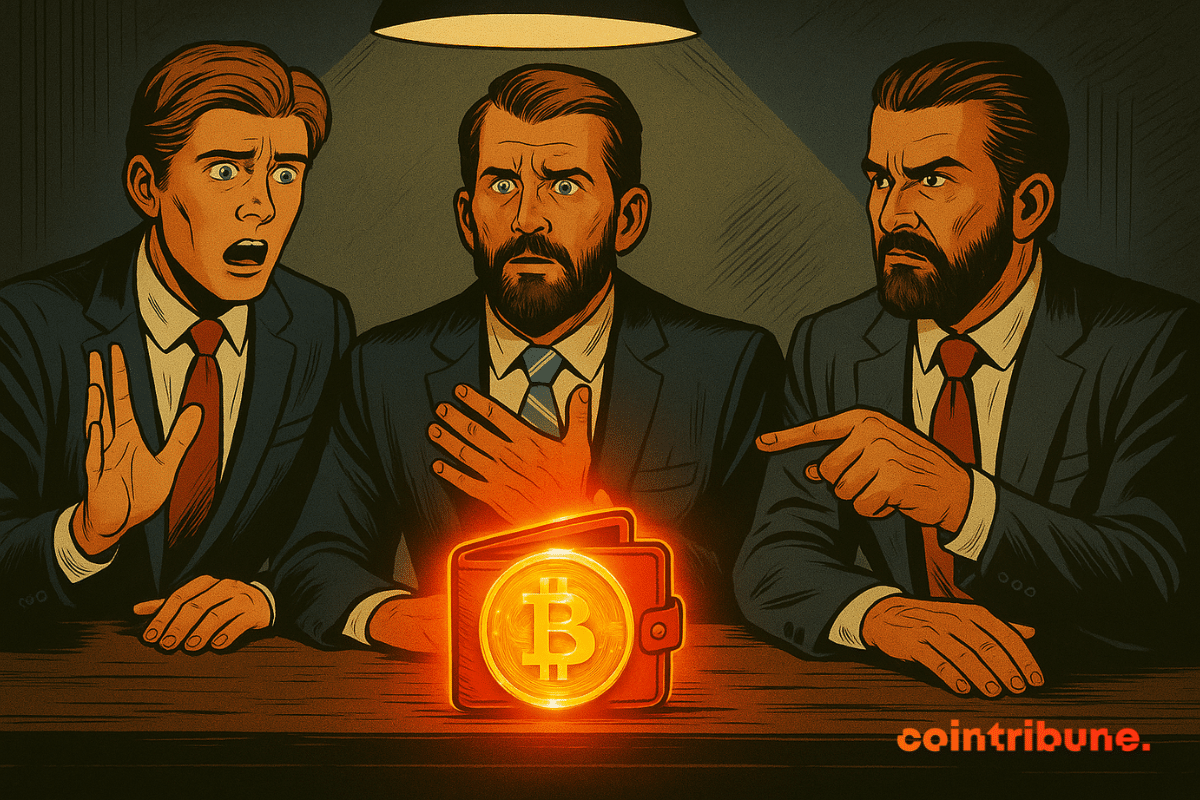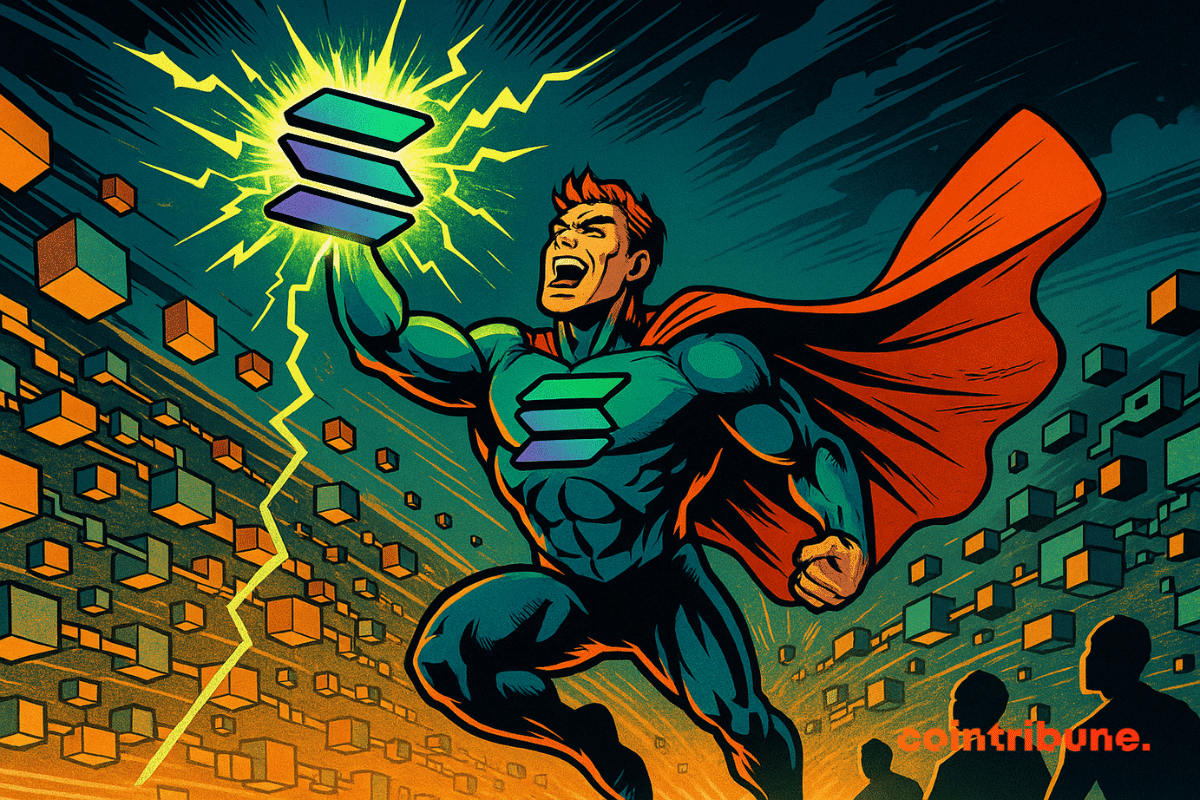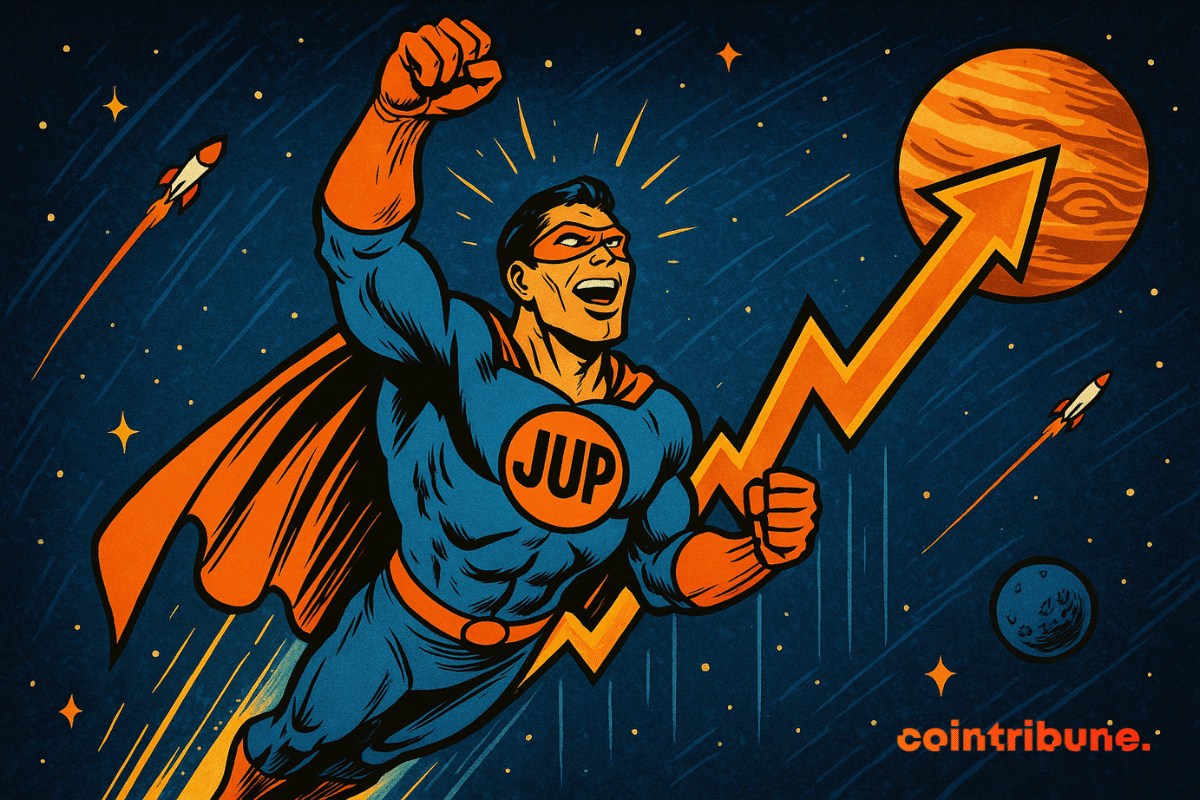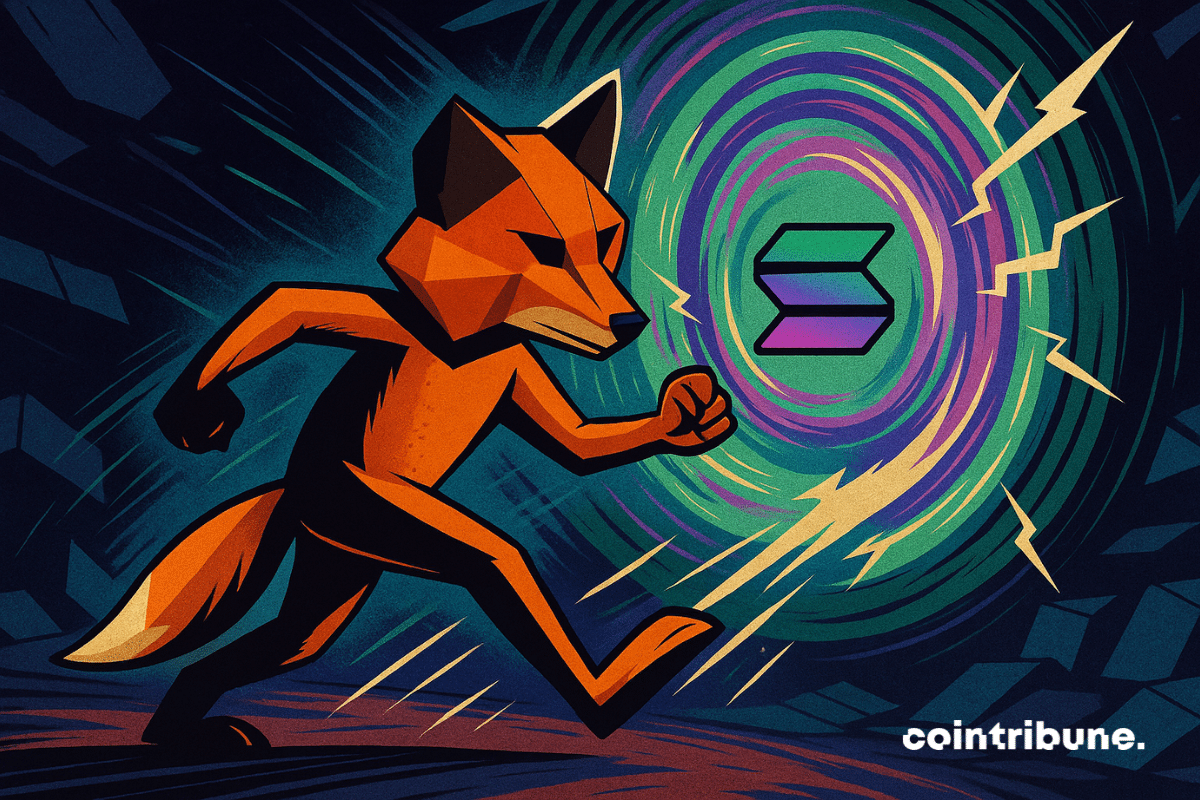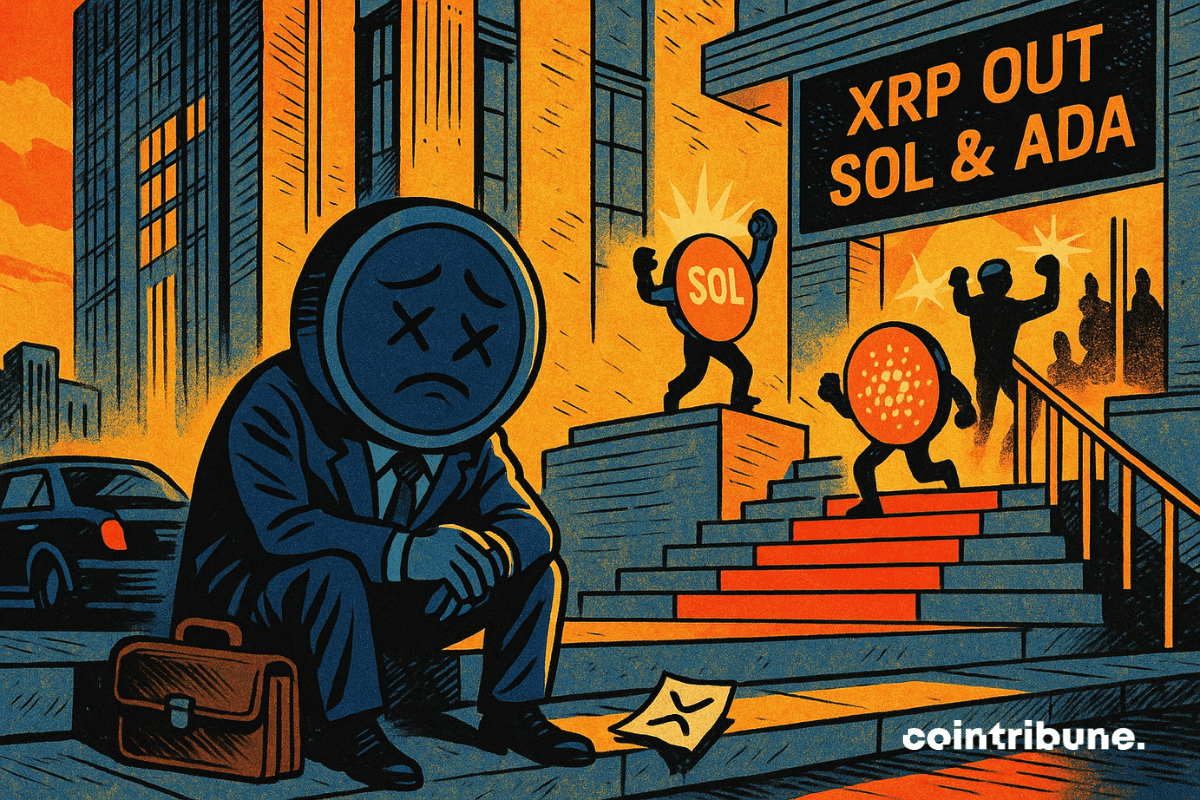While we debate decentralization, PancakeSwap is feasting: $530 billion traded and a barely concealed dominance over DeFi... centralized? Who said "free finance"?
Solana (SOL)
While Bitcoin and Ethereum are cautiously progressing in a calm market, it is Solana that is stealing the spotlight. In just one week, its price has soared by 16.5%, eclipsing the performances of the two historical pillars. This breakthrough is not trivial: it comes in the context of a return to fundamentals, where investors are once again scrutinizing technical signals and the robustness of projects. Solana, long relegated to the background, now seems to be repositioning itself as a serious contender for leadership in the next cycle.
The crypto market is taking a strategic turn. After a tumultuous June marked by geopolitical tensions and price volatility, July is emerging as an unprecedented window of opportunity. While Bitcoin remains firmly above $100,000, bullish signals are multiplying, supported by the return of institutional flows. In this climate full of expectations, five cryptocurrencies are emerging as must-haves to capture the momentum of the next bull run.
A Solana ETF that stakes, analysts rejoicing, and the SEC saying nothing... Could REX Shares be trying to make crypto dance on the regulatory floor?
Solana bombards DEXs, Ethereum takes the hit... but behind the sparkle, a network coughs and memecoins tumble. The crypto king trembles, but can the prince reign without an active throne?
Has the crypto casino definitely closed its doors? Probably. There are signs that cannot be mistaken...
For a long time reserved for bitcoin, the role of strategic treasury asset is now expanding to other cryptos. Upexi, listed on Nasdaq, is a concrete illustration of this: it has strengthened its treasury with 735,692 SOL, valued at over 105 million dollars. And that's not all: the company also announces the tokenization of its shares on the Solana blockchain.
Solana is gaining traction as ETF speculation intensifies. Rising CME activity, institutional filings, and growing public interest suggest the asset may be nearing a pivotal moment.
As the crypto market seeks a new breath, some assets are sending unexpected signals. Solana (SOL), long burdened by volatility, is rekindling traders' interest, fueled by derivatives indicators in a clear imbalance. In a climate of tense anticipation, this resurgence of bullish pressure does not go unnoticed and could herald a strategic turning point for this asset, often regarded as the barometer of speculative sentiment.
As the crypto ecosystem remains dominated by heavyweights Bitcoin and Ethereum, a bold statement from Anthony Scaramucci, founder of SkyBridge Capital, shakes the hierarchy. At the DigiAssets 2025 conference, the investor claimed that Solana will overturn Ethereum, while acknowledging that he does not hold a strong opinion on the latter. A comment that reignites a burning debate: Can Solana really establish itself as the new benchmark for blockchains?
CoinShares joins the growing list of firms filing for a Solana spot ETF as market interest builds.
While Ethereum churns and Bitcoin snoozes, Solana is carving its crypto path into company balance sheets. What if the future of decentralized finance is written in SOL letters?
Seven giants align for Solana ETFs, the SEC plays the waiting game: suspense, thrills, and staking in the plush backrooms of the American regulatory temple. Stay tuned...
While attention is focused on upcoming regulations and emerging ETFs, a lesser-known technical indicator is reshuffling the deck. XRP is seeing a fourfold increase in its realized market capitalization compared to that of Solana. This capital shift suggests a deeper and unexpected market dynamic, counter to the visible enthusiasm for Solana. Behind this metric, a change in investor perception seems to be emerging, giving XRP a central role once again in the altcoin arena.
While the bombs are falling, Solana climbs, XRP gets excited, and ETFs stir the crypto pot. Should we see geniuses or arsonists behind these digital surges?
In just a few hours, cryptocurrencies have faltered under the weight of a major geopolitical event. Following Israeli strikes in Iran, over one billion dollars in positions were liquidated, taking with them the market's recent gains. This is not just a simple episode of volatility, but a tangible sign that these assets, which stem from a promise of sovereignty, remain exposed to real-world shocks.
Crypto in free fall: Dogecoin is howling, Solana is wobbling, while Bitcoin is acting smug. A waltz of numbers and tweets... but who will laugh last?
Solana is shaking, XRP is plummeting, Ethereum is swaying... the whales dance and small investors suffer. The crypto circus continues, without a net, to the rhythm of an increasingly unpredictable market.
Classover transforms its treasury into a crypto vault: 500 million dollars for Solana! An edtech company that embraces blockchain and sees its stock soar. New trend or financial revolution? Discover this unprecedented bet.
Pump.fun, a Solana-based memecoin launchpad, is preparing to launch its own token with a $1 billion raise. The platform has seen significant growth but faces legal challenges and mixed feedback from the crypto community.
A Trump Wallet without Trump inside? Here comes a crypto wallet, loaded with rewards... but the heirs swear they never scanned the QR code.
While it was believed that the memecoin season was over on Solana, a new frenzy of token launches has reignited network activity. Solana is becoming the most active blockchain.
Solana is going through a tumultuous period with a 10% drop that has surprised investors. Amid the collapse of popular memecoins and concerns over upcoming massive token unlocks, the flagship blockchain finds itself at a decisive crossroads. Does this temporary storm hide deeper fragilities?
While the SEC raises its eyebrows, OpenSea distributes XP. Rewards, quests, treasures... the NFT market is preparing its SEA token and reinventing crypto in its own way.
Bitcoin’s recent dip has sparked debate over whether altcoins are ready to rally. Some experts are hopeful, while others remain cautious or doubtful about a major altcoin season in 2025.
Solana is currently going through a consolidation phase between $164 and $185, oscillating around $174. Paradoxically, this technical pause is accompanied by a remarkable vibrancy of its DeFi ecosystem. Will this momentum be enough to propel SOL beyond its current consolidation zone?
JUP surged 12% on Monday with rising volume and bullish signals. Analysts believe the token could be heading toward $1.
Interoperability is the great unfinished promise of Web3. As blockchains remain siloed, MetaMask, the quintessential Ethereum wallet, makes a strong move by integrating Solana, one of the fastest and most popular ecosystems at the moment. Thanks to its Snaps technology, this technical advancement paves the way for unified management. This is a strong signal in a sector that still struggles to fulfill its promise of a seamless decentralized web, where the investor controls their assets without borders or friction.
As Bitcoin flirts with new highs and the crypto market once again dresses in green, an anomaly strikes hard: XRP, usually in the spotlight, is experiencing an unexpected collapse in its flows. Far from the excitement energizing ADA, SOL, or even SUI, Ripple seems to be going its own way... and not in a good direction. A look back at a reshuffling that could redefine the priorities of institutional investors.
Solana promises to turn the banker into a seller of coffee shares. Cryptocurrency accessible by smartphone, money reserved for the rich? Soon to be a tale of the past.

